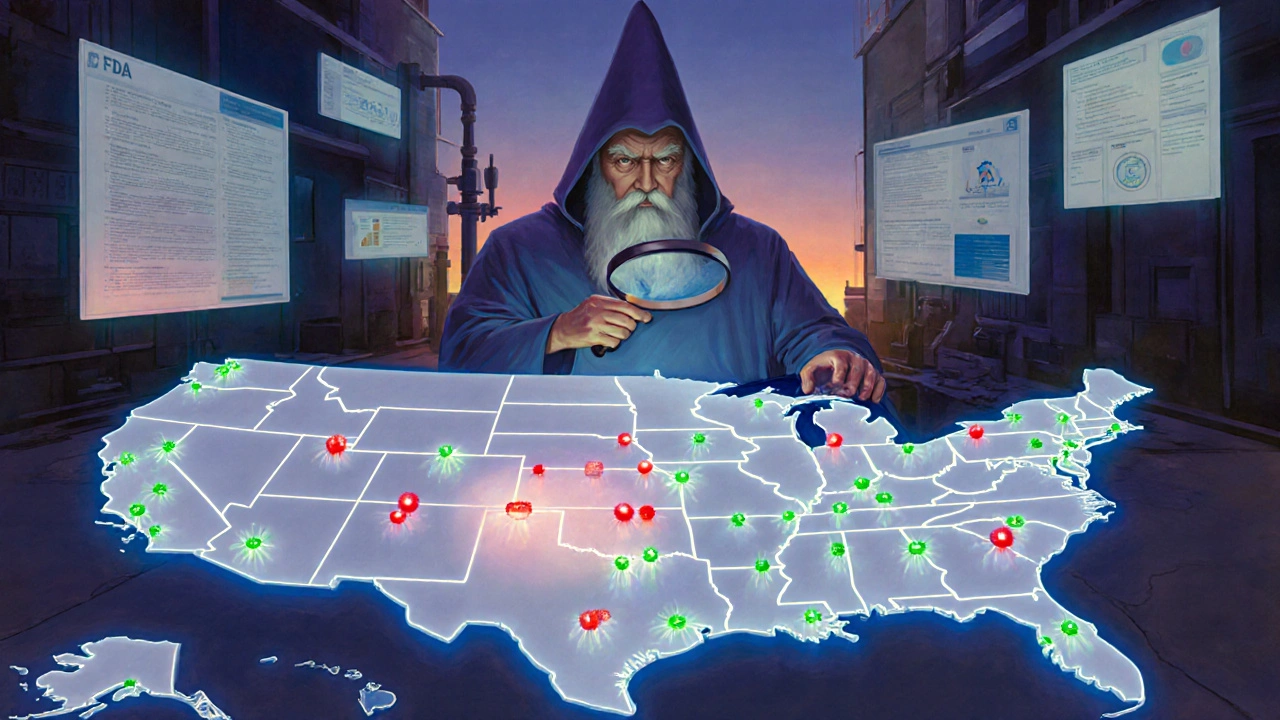Drug Safety Detection Calculator
How Many Patients Are Needed to Detect Side Effects?
The FDA Sentinel Initiative analyzes real-world data to detect medication safety issues. Enter values below to see how data volume affects detection capability.
The U.S. Food and Drug Administration doesn’t wait for people to get hurt before acting. Since 2008, it’s been using big data to catch dangerous drugs before they cause widespread harm. This isn’t science fiction-it’s the FDA Sentinel Initiative, a real-time monitoring system that tracks millions of patient records across the country to spot hidden risks in medications, vaccines, and medical devices.
What Is the FDA Sentinel Initiative?
The FDA Sentinel Initiative is a nationwide network that pulls together health data from insurance claims, hospital records, and electronic health systems. Unlike old-school safety systems that rely on doctors or patients voluntarily reporting side effects, Sentinel actively scans data to find patterns. It doesn’t collect or store your personal records. Instead, it asks questions-like, “Are people taking Drug X more likely to have a heart attack?”-and lets each hospital or insurer answer from their own secure systems.
Before Sentinel, the FDA mostly relied on the FDA Adverse Event Reporting System (FAERS), where about 2 million reports come in every year. But FAERS has big gaps. Many side effects go unreported. Others are mixed up with unrelated illnesses. And no one knows how many people actually took the drug-so it’s hard to tell if a problem is rare or common.
Sentinel fixes that. It knows exactly how many people used a drug because it tracks prescriptions and insurance claims. It can spot a spike in kidney failures among seniors on a new diabetes med, or a rise in liver injuries linked to a popular painkiller-all within weeks, not years.
How Does It Work Without Collecting Your Data?
Sentinel’s secret is its distributed design. Your medical records stay where they are-with your doctor, your insurer, or your hospital. The FDA doesn’t reach in and download them. Instead, it sends out a standardized query: “Count how many patients aged 65+ who took Drug Y had a stroke in the last 90 days.”
Every partner in the network-whether it’s Kaiser Permanente, UnitedHealthcare, or a small rural clinic-runs that same query on their own data. They don’t share names, addresses, or Social Security numbers. They just send back a number: “We saw 12 cases.” The FDA adds up all the numbers from hundreds of sources. That’s how they know if a risk is real.
This setup protects privacy while giving the FDA the power to detect problems at scale. It’s like having thousands of eyes watching for trouble, but no one ever sees your full medical file.
From Mini-Sentinel to the Full System
The idea didn’t start big. Between 2009 and 2015, the FDA ran a pilot called Mini-Sentinel. They tested the system with just a handful of data partners. They asked: Can we trust these numbers? Can we get answers fast enough? Can we make sure everyone’s using the same rules?
The pilot worked. By 2016, the full Sentinel System went live. Today, it’s the largest distributed medical data network in the world. It covers over 250 million people-nearly 80% of the U.S. population. And it’s not just for drugs. It tracks vaccines, biologics, and even medical devices like pacemakers and joint replacements.
In 2019, the FDA split Sentinel into three teams to make it sharper:
- Sentinel Operations Center handles daily monitoring and runs safety checks.
- Innovation Center builds new tools using AI and machine learning to dig deeper into messy clinical notes.
- Community Building and Outreach Center works with researchers, hospitals, and international agencies to expand the network.

What Data Does It Use?
Early on, Sentinel mostly used insurance claims data-things like diagnosis codes, prescriptions filled, and hospital visits. That’s useful, but limited. It won’t tell you if a patient had a rash, dizziness, or confusion unless it led to a doctor’s visit and a code.
Now, the system is adding electronic health records (EHRs). These contain real clinical notes-what the doctor wrote, what the patient said, lab results, and even symptoms not coded in billing systems. One study found that 89% of U.S. hospitals now use certified EHRs. Sentinel is learning how to read them.
The Innovation Center is training AI models to pull out hidden clues from unstructured text. For example, if a doctor writes, “Patient reports unusual fatigue after starting new statin,” the system can flag that-even if “fatigue” isn’t listed as a diagnosis. That’s a game-changer for spotting side effects that slip through traditional systems.
Real-World Impact: When Sentinel Caught Something
Sentinel doesn’t just collect data-it changes decisions.
In 2017, it flagged a possible link between a common arthritis drug and heart rhythm problems. The FDA reviewed the data, asked for more analysis, and updated the drug’s warning label within months. Without Sentinel, that signal might have taken years to emerge from scattered case reports.
Another time, Sentinel detected a spike in severe allergic reactions to a new flu vaccine. The system pinpointed it to a specific batch produced by one manufacturer. The FDA pulled that batch before it reached most pharmacies. That’s real-time safety.
For vaccines, Sentinel runs a special program called PRISM (Postmarket Rapid Immunization Safety Monitoring). It checks for rare side effects like Guillain-Barré syndrome or anaphylaxis within days of a new shot being rolled out. That’s why we can trust new vaccines faster than ever before.
Limitations and Challenges
Sentinel isn’t perfect. It can’t catch every rare side effect-especially if only one in a million people gets it. The system needs large populations to spot small risks. And if a drug is only used by a few thousand people, it might not show up in the data.
Also, EHR data is messy. One hospital codes “chest pain” as “ChestPain.” Another calls it “Angina.” AI helps, but it’s not flawless. Missing data is another issue. If a patient goes to a free clinic or doesn’t have insurance, their record might not be in the system.
And while Sentinel is fast, it’s not instant. A complex safety question can still take weeks to answer. It’s not a crystal ball-it’s a powerful magnifying glass.

Why It Matters for You
If you’ve ever taken a prescription, gotten a vaccine, or used a medical device, Sentinel is working behind the scenes to keep you safe. It doesn’t replace clinical trials-but it fills the gaps they leave. Trials test drugs on thousands. Sentinel watches millions. Trials last years. Sentinel watches in real time.
It’s also helping drug companies design safer medications. If a company knows a side effect might pop up in older patients, they can adjust dosing or warn doctors before launch. That’s prevention, not just reaction.
And it’s not just a U.S. project. Other countries are building similar systems based on Sentinel’s model. Canada, the UK, and the EU are looking at how to copy its distributed, privacy-first approach. That makes Sentinel a global standard for drug safety.
The Future: AI, Global Networks, and Faster Answers
The next phase-sometimes called Sentinel 3.0-is focused on smarter analytics. The Innovation Center is testing AI that can predict risks before they become problems. Imagine a system that says, “Based on trends in 120 million records, Drug Z is likely to cause liver stress in patients with Type 2 diabetes. Let’s test this before it spreads.”
Funding has jumped to over $300 million to support this evolution. The goal? To make Sentinel so good that regulators worldwide use it as the gold standard. And it’s already influencing how new drugs are approved-thanks to the 21st Century Cures Act, which lets the FDA use real-world data to support some approvals.
Soon, you might hear your doctor say, “We’re using Sentinel data to decide if this drug is right for you.” That’s the future: personalized safety, powered by big data.
What’s Next for Drug Safety?
Sentinel proves you don’t need to wait for tragedy to act. By turning scattered health records into a living safety net, the FDA has turned passive reporting into active protection. It’s faster, smarter, and more inclusive than anything that came before.
For patients, it means fewer surprises. For doctors, better guidance. For drug makers, clearer signals. And for the public? A system that’s constantly watching-so you don’t have to.
How is FDA Sentinel different from FAERS?
FAERS relies on voluntary reports from doctors, patients, or drug companies-many go unreported, and there’s no way to know how many people took the drug. Sentinel uses real-world data from millions of patients, with known exposure rates, to find patterns statistically. It’s active monitoring, not passive reporting.
Does Sentinel collect my personal medical records?
No. Your records stay with your hospital or insurer. Sentinel sends out queries, and each partner runs them on their own secure systems. Only anonymized, aggregated results are shared with the FDA. No names, addresses, or identifiable info are ever transferred.
Can Sentinel detect rare side effects?
It can, but only if enough people are affected. If a side effect happens in 1 in 10,000 users, Sentinel may catch it. But for rarer events-like 1 in 100,000-it might miss them. That’s why clinical trials and FAERS still matter. Sentinel works best when combined with other tools.
What kind of data does Sentinel use?
Sentinel uses insurance claims data (like prescriptions and hospital visits) and increasingly, electronic health records (EHRs) that include doctor’s notes, lab results, and symptoms. The system is now using AI to extract useful info from unstructured text in EHRs, which older systems couldn’t use.
Is Sentinel used outside the U.S.?
The system itself is U.S.-based, but its model is being copied worldwide. Countries like Canada, the UK, and members of the European Union are building similar distributed networks based on Sentinel’s architecture. It’s become the global blueprint for post-market drug safety monitoring.

